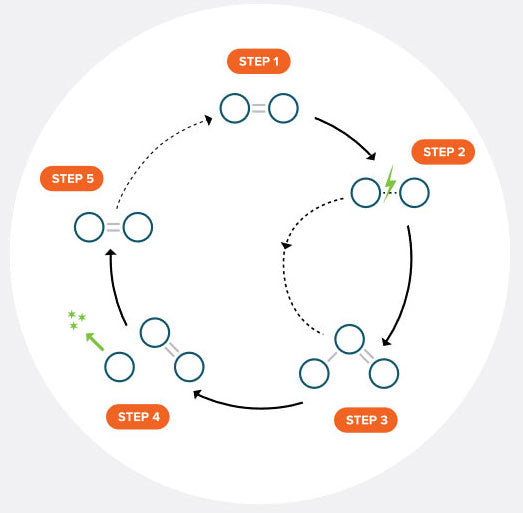The Ozone-Oxygen-Ozone Cycle Explained

Step 1
Oxygen molecule (O2)
Step 2
The applied energy splits the oxygen mole-cule (O2) into atomic oxygen (O1)
Step 3
The single atomic oxygen (O1) connects to an oxygen molecule (O2) and ozone (O3) is formed
Step 4
The single atomic oxygen (O1) disconnects from the ozone molecule (O3) and performs oxidation
Step 5
The ozone molecule (O3) has turned into an oxygen molecule (O2). The cycle is completed







